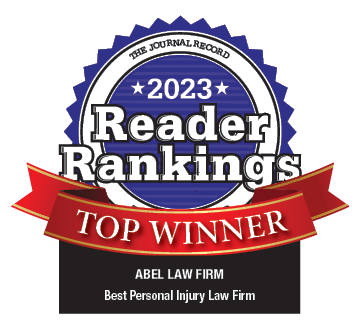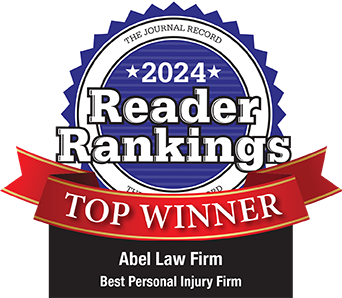Some “tort reform” legislation that became effective in 2011 includes:
COMPULSORY AUTO INSURANCE:
Known as “no pay, no play”, the new 47 O.S. §7-116 limits the amount any claimant may receive if injured while driving or owning a vehicle not in compliance with the Compulsory Insurance Law. It applies to any civil action for damages for motor vehicle accidents or any claim against an auto liability carrier. The maximum the uninsured may recover shall be limited to the amount of medical costs, property damage, and lost income and shall not include any award for pain and suffering. The limitations shall not apply: 1) if the plaintiff or claimant was injured by a motorist under the influence of drugs or alcohol who was convicted of, or pled guilty or nolo contendere to the offense, or who dies as a result of the accident if it is proven by a preponderance of the evidence that the deceased motorist was under the influence; 2) if the plaintiff or claimant was a passenger in a motor vehicle involved in the accident, unless the plaintiff or claimant is an owner of the vehicle; 3) if the plaintiff or claimant was not in any motor vehicle involved in the accident; 4) to wrongful death claims; 5) if the motorist who caused the accident intentionally caused it, left the scene or, at the time of the accident, was acting in furtherance of the commission of a felony; 6) if, at the time of the accident, the plaintiff or claimant was claimed as a dependent on the federal income tax return of one or both parents of the plaintiff or claimant and the parent or parents were not in compliance with the Compulsory Insurance Law; or 7) if, at the time of the accident, the plaintiff or claimant previously had been covered by an insurance policy meeting the requirements of the Compulsory Insurance Law that was terminated or non-renewed for failure to pay the premium, unless at least thirty days prior to the accident notice of termination was sent to the last-known mailing address of the policyholder. Each person involved in the accident and who is found liable for damages to the plaintiff or claimant (and their liability insurer) may assert the limitation unless the exceptions apply.
DAMAGES CAP FOR NON-ECONOMIC LOSSES
For all civil actions involving bodily injury other than wrongful-death cases filed on or after November 1, 2011, an amendment to 23 O.S. §61.2 creates a cap for noneconomic damages that no longer applies only to professional negligence cases. The statute reiterates the long-standing rule that economic compensation shall not be subject to any limitation, but changes the law for noneconomic loss, which shall not exceed $350,000 regardless of the number of parties against whom the action is brought or the number of actions brought. Exceptions depend on the conduct of the defendant if, in negligence cases, the judge or jury finds by clear and convincing evidence the defendant’s acts or failures to act were in reckless disregard for the rights of others, grossly negligent, fraudulent, intentional or with malice. In non-jury cases, the judge must make findings of fact regarding economic and noneconomic damages. In jury cases, the jury must return a general verdict and answers to interrogatories. They must specify: 1) total compensatory damages; 2) the portion of damages representing economic loss; and 3) the portion of damages representing noneconomic loss. They must also specify whether the conduct of the defendant amounted to reckless disregard for the rights of others, gross negligence, fraud or intentional or malicious conduct. The jury will not be informed or instructed about the limit on noneconomic damages, so ostensibly will not know the effect of their answers to the special interrogatories. Separate judgments for economic and noneconomic damages will be entered.
DAMAGES FOR FUTURE LOSSES
A new damages law, 23 O.S. §9.3, provides for periodic payments of future damages, i.e. those incurred after the date of judgment for medical, health care, or custodial care services; physical pain and mental anguish; disfigurement or physical impairment; loss of consortium, companionship, or society; and loss of earnings. The statute applies to actions in which the present value of future damages (as determined by the court) is $100,000 or more. Upon request of a party, the court may order future damages be paid in whole or in part in periodic rather than lump-sum payments. Periodic payments may not exceed 7 years from the date judgment is entered. The statute puts additional burdens on the courts: The court shall make a specific finding of who will be the recipient, the dollar amount of payments, the interval between payments and the number of payments. Each periodic payment shall include the principal owed plus interest at the rate applicable for postjudgment interest. Attorney fees are not subject to future installments. To compute attorney fees, the court shall place a total value on the future payments based on plaintiff’s projected life expectancy and reduce the amount to present value. As a condition to authorizing periodic payments, the court shall require a defendant who is not adequately insured to provide evidence of financial responsibility in an amount adequate to assure full payment. A judgment shall provide payments to be funded by 1) an annuity contract from licensed insurance company; 2) an obligation of the U.S.; 3) applicable and collectible liability insurance; or 4) any other satisfactory form of funding approved by the court. Even when there is applicable and collectible liability insurance, the insurer can continue to invest money and delay payment of the judgment. On termination of periodic payments, the court’s work continues: It shall order a return of whatever remains of the security. Upon the death of the recipient, future earnings damages shall continue to be paid to the estate without reduction. The statute contains a remnant of its previous history as applied to medical negligence cases: “E. The entry of an order for the payment of future damages by periodic payments constitutes a release of the health care liability claim filed by the plaintiff.”
JOINT & SEVERAL LIABILITY
A damages statute, 23 O.S. §15, was amended to eliminate joint and several liability for actions accruing on or after November 1, 2011. In civil actions based on fault, liability shall be several only and a joint tortfeasor shall be liable only for the amount of damages allocated to him.
MEDICAL BILLS — EVIDENCE OF ACTUAL AMOUNTS PAID
For personal-injury cases filed on or after November 1, 2011, 12 O.S. §3009.1 provides the actual amounts of medical and similar bills paid — not the amount billed — shall be the amounts admissible at trial. The statute puts considerable burden on health care providers to either file liens or accept reduced payments. If the provider signs a statement that it will accept the amount paid as full payment, the statement is to be admitted as part of the record (but need not be shown to the jury). If a provider has filed a lien, the amount in excess of the amount paid, but not more than the amount of the lien, shall be admissible. If no payment has been made, Medicare reimbursement rates in effect when the injury occurred shall be admissible if there is a signed statement by the provider (admitted as part of the record but that need not be shown to the jury) that it will accept payment at the Medicare reimbursement rate less the cost of recovery. However, if a provider has filed a lien in an amount in excess of the Medicare rate, then bills up to the amount of the lien shall be admissible.
TAXABILITY IN JURY INSTRUCTIONS
A new law, 12 O.S. §577.4, mandates OUJI-CIV shall include an instruction notifying the jury that no part of an award for personal injury or wrongful death is subject to federal and state income tax, and any damages award shall not be increased or decreased by any consideration for income taxes. “In order to be admitted at trial, any exhibit relating to damage awards shall reflect accurate tax ramifications.”
TRESPASS, PRIVATE LANDS & PUBLIC RECREATION ACT
There is a new Oklahoma Private Lands and Public Recreation Act, 21 O.S. §§1835.3 – 1835.10, requiring express or implied consent of an owner for recreational use of private land primarily devoted to farming, ranching and forestry (including all buildings, fixtures, equipment and machinery). The act provides for misdemeanor trespass convictions, jail terms up to 6 months, and fines of $250-$2500. Local, county or state officers may issue citations.
TRESPASS & ATTRACTIVE NUISANCE
A new statute, 76 O.S. §80, is a codification of prior Oklahoma premises liability law and the attractive-nuisance doctrine. The statute states a possessor of land has no duty to make its premises safe for a trespasser and is not subject to liability for any injury to a trespasser, unless he knows or should know of the trespasser’s presence. He has a duty not to injure by a wanton or intentional act. Injury or death to a child trespasser from a “highly dangerous artificial condition” (undefined) may result in liability if the plaintiff establishes the possessor knew or should have known children were likely to trespass; knew or should have known the condition was unusually attractive to children and involved unreasonable risk of death or serious bodily harm; the injured child was attracted onto the premises by the condition; the child lacked the ability to appreciate or realize the risk; the utility of maintaining the condition and the burden of eliminating the danger were slight compared to the risk; and the injury was directly caused by the possessor’s failure to exercise reasonable care to eliminate the danger or otherwise protect the child. The statute codifies the common law as to ages at which children may be deemed negligent, but couches it in terms of appreciation or assumption of the risk. A child under 7 is deemed to have no ability to appreciate the risk of “highly dangerous artificial conditions”; a child 7-14 is presumed to lack the ability (but the presumption can be overcome by greater weight of evidence showing he had the ability); and a child 14 and older has the burden of proving by the greater weight of evidence that she lacked the ability.
WORKERS’ COMPENSATION
In 2011, the Workers’ Compensation Code moved to 85 O.S. §§301-413. Among the changes, owners or operators of oil and gas wells and operations shall be deemed to be principal employers and are immune from suit in district court. 85 O.S. §302. Architects, engineers and land surveyors shall be deemed principal employers for services performed at or on the site of a construction project, but not for negligent preparation of design plans and specifications. Id.
–Lynn Brusin Mares


